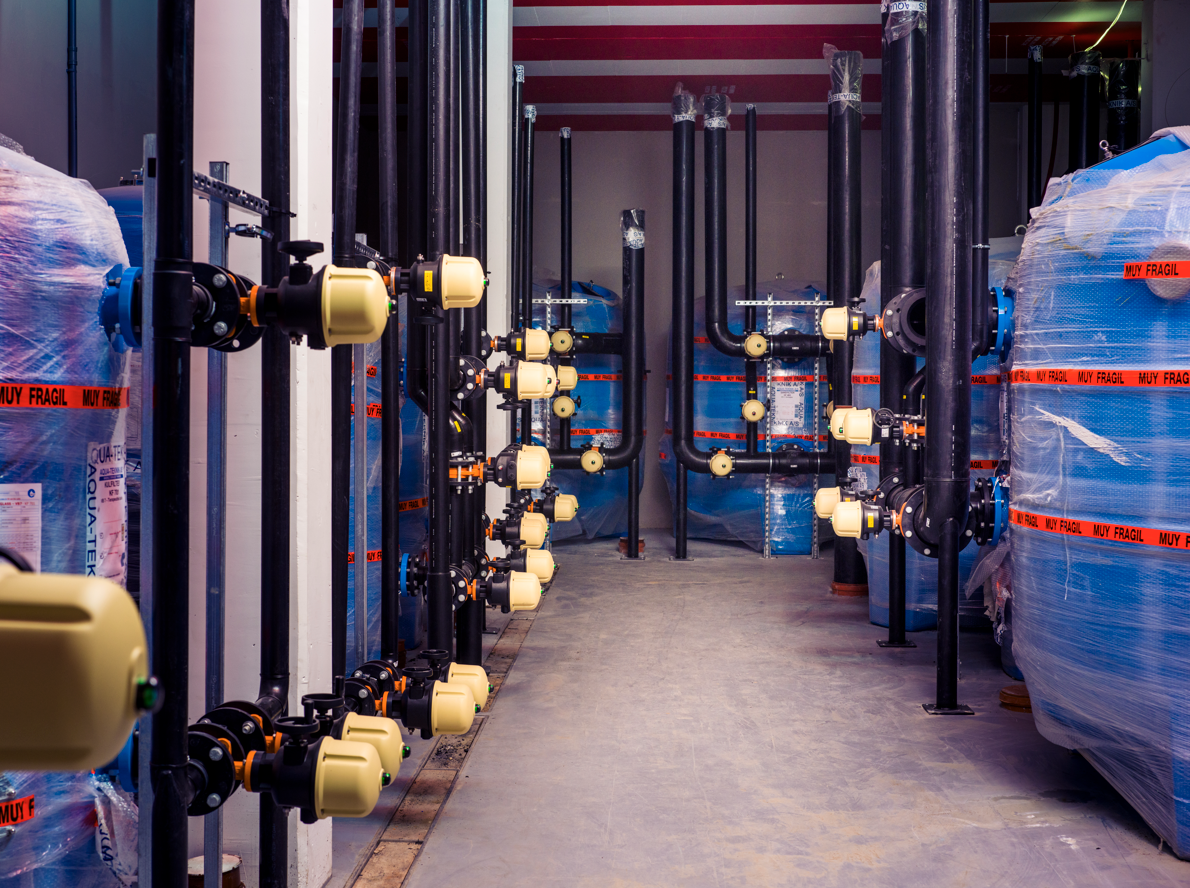Probably the country's most spectacular swimming pool construction will have eight pools spread over several floors. The water expert company Aqua-Teknik source new technology behind the bathing experience from the food industry and cogeneration plants.
Many contractors have burned their fingers on technically complex swimming pool constructions over the years. Therefore, there are often only a few players bidding on them. Perhaps the most experienced in the industry is Aqua-Teknik, which since 1987 has supplied pools, water treatment plants, and furnishings to swimming pools both at home and abroad.
Together with MT Højgaard, Aqua-Teknik is building the new Water Culture House on Papirøen, Copenhagen, a 5,000 square meter swimming and harbor bath with wellness and association facilities. Armatec supplies high-quality components for the bath's water treatment plant. This is equipment that is already widespread in waterworks and the process industry, among others.
"The Water Culture House on Papirøen has eight pools on both the ground floor and the first floor in various shapes, from a 25-meter pool to smaller pools such as a plunge pool with ice water for two people," explains André Carlsen, technical manager at Aqua-Teknik.
"Both the developer and the contractor are very aware of the quality in this case. They want to be as sure as possible that there will be no problems with either the pools or the process plant. That's why we were asked to participate. We have the competencies to do both the water treatment and the implementation in the construction and in the pools. And we can document it with a number of current references from major swimming pool projects."
Precisely because of the high-quality requirements for water treatment, Armatec was chosen as the supplier of central components in the plant. For 60 years, Armatec has supplied valves and actuators to the Danish water industry and collaborates with several European suppliers of quality components that have been tested and approved in relation to the strictest requirements in the industry.

Photo above: The plant's filter tanks are each filled with 10-15 tons of AFM glass or activated carbon. They are rinsed about once a week, not because they are dirty, but because they gradually clog up and therefore require a disproportionate amount of energy to push the water through the filters. Photography: Jeppe Carlsen
The Water Culture House on Papirøen, which will be completed at the end of 2025, contains indoor and outdoor pools, a Japanese bath, a wellness department, and training facilities. It is all connected by one overall technical solution for water treatment delivered and installed by Aqua-Teknik with inspiration from the process industry. It is one of the first plants in this country with automatic backwashing and motor valves throughout the plant.
The solution is well-known and widely used in industrial process plants such as dairies, breweries, and combined heat and power plants. However, the swimming pool industry has so far been reluctant to switch from the old-fashioned manual operation to automation. But that is changing.
"You may be a little more hesitant in your approach and typically wait to introduce new technology until it is 100 percent tested," assesses André Carlsen.
"A water treatment plant for a swimming pool is at least as technically complex as an industrial process plant. The new technology eliminates both human error and saves time, so employees can be freed up for other tasks. In addition to the Water Culture House, we are implementing automatic backwashing and motor valves in the swimming pool at the new Arena Quarter School in Ørestad. I also think we will see many existing swimming pool facilities around the country being updated with similar automation solutions."
According to André Carlsen, the next step in development will be what the industry calls demand-driven rinsing. Instead of the rinsing of filters taking place at fixed intervals, sensors tell the staff when it is time for rinsing. The Water Culture House's water treatment plant is equipped with 25 filters, each filled with 10-15 tons of AFM glass or activated carbon. They are rinsed about once a week, not because they are dirty, but because they gradually clog up and therefore require a disproportionate amount of energy to push the water through the filters.
Overall, André Carlsen believes that in the future we will see water treatment plants that, through increased automation, become more resource-saving and sustainable. The technology is in place, and the authorities have also begun to open up to the new possibilities.
"Our new plants at the Water Culture House Papirøen and the Arena Quarter School are both prepared for demand-driven operation and rinsing. When it becomes relevant one day, it only requires setup."
The developer, the Property Foundation Water Culture House Papirøen, has chosen to focus sharply on quality and operational reliability in the Water Culture House's water treatment plant.
Armatec has, among other things, supplied Wouter Witzel's butterfly valves, both for the Water Culture House and for the Arena Quarter School in Ørestad. The butterfly valves from Wouter Witzel have a unique design on the flap and fixed vulcanized liners and are characterized by low torque, easy operation, and long service life.
In addition, AQ electric actuators from Bernard have been supplied for the control of the valves for automatic operation. The AQ actuators are supplied for on-off operation and are characterized by a compact design, low weight, visible position indicator, quick grip for manual operation, and lifetime lubricated gear.